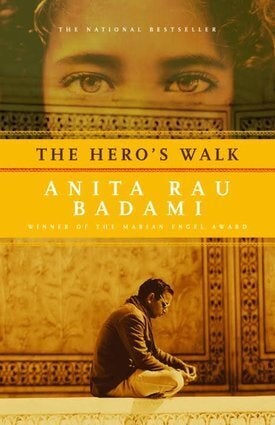There's no question that whitewashing in Hollywood is a problem, but perhaps a more underrated issue is the countless movies that idolize white saviours.
The latest example of this is “The Great Wall,” starring Matt Damon. Among the many who slammed the film for casting a white hero to save China was “Fresh Off The Boat” star Constance Wu. Last year, she took to Twitter to explain just how damaging these types of stories are.
“We have to stop perpetuating the racist myth that [only a] white man can save the world,” she wrote in July. “Our heroes don’t look like Matt Damon. They look like Malala. Ghandi. Mandela. Your big sister when she stood up for you to those bullies that one time.”
“It’s not about blaming individuals… Rather, it’s about pointing out the repeatedly implied racist notion that white people are superior to POC [people of colour] and that POC need salvation from our own colour via white strength,” she continued. “When you consistently make movies like this, you ARE saying that. YOU ARE… Whether you intend to or not. We don’t need salvation. We like our colour and our culture and our own strengths and our own stories.”
Unfortunately, “The Great Wall” isn’t the only Hollywood movie to use the hurtful white saviour trope, and we have proof! Here are nine times people of colour didn’t need white saviours.
One of the most common plot lines of white saviour movies is the one where a white teacher is sent to change and inspire a group of non-white students. “Freedom Writers” is just one example of this.
In this film, Hilary Swank plays real-life teacher Erin Gruwell, who gets a job at an inner-city school in Long Beach, California, where gang violence is prominent in the lives of students. There, she helps separate her class from everyday violence and teaches them to apply themselves in school instead.
Other films with a similar plot include “Dangerous Minds” (1995) and “The Ron Clark Story” (2006).
“The Last Samurai” is about former U.S. military captain Nathan Algren (Tom Cruise) whose only job in the film is to save the day. First, he is hired to train the Imperial Japanese Army so that they can end a Samurai rebellion against Japan’s emperor. But after Algren is captured by the enemy and embraces Samurai culture, he switches sides and helps defend the Samurai rebels instead.
This film tells the story of a Southern woman named Leigh Anne Tuohy (Sandra Bullock) who takes in a homeless black teenager after she spots him wandering around on the streets. Not only does she give him a home and a family, but she teaches him how to play football and eventually helps him to get into college.
Although “The Blind Side” was based on the true story of Michael Oher’s journey to the NFL, the film focuses on Tuohy, who is presented as the hero.
Yes, “Avatar” is a white saviour movie, too, but disguised with special effects. In the film, ex-marine Jake Sully (Sam Worthington) and a team of scientists and security forces travel to a new world called Pandora to extract a valuable mineral. However, after disguising himself to look like the indigenous people called the Na'vi, Sully falls in love with the land and culture and eventually helps save Pandora.
The plot of “Avatar” also closely resembles that of Disney’s “Pocahontas” where a white man eventually saves the Native Americans from war with the English settlers.
“Cool Runnings” is a favourite film for many, but strip away its silly comedy, and it’s still a white saviour movie at heart. The film follows a Jamaican bobsled team who is helped by a former bobsled racer (John Candy) to get into the Olympic Games.
“Gran Torino” is a bit of a mess. Not only is Clint Eastwood’s character, Korean War veteran Walt Kowalski, a racist, but he turns out to be the hero of the movie after he saves his Hmong neighbours from gang violence.
Set in the early 1960s, this film follows a Mississippi reporter named Skeeter Phelan (Emma Stone) as she tries to write a story from the housekeepers’ perspectives. While maids Aibileen (Viola Davis) and Minny (Octavia Spencer) share their struggle with trying to be treated as equals, the film’s story is always brought back to Skeeter’s journey to write her investigative piece, which is eventually published as a book.
“Dances with Wolves” takes place in 1864 and follows Civil War soldier Lt. John Dunbar (Kevin Costner) who is assigned to a remote outpost where he meets the Sioux tribe. He soon learns to embrace their humble way of life and eventually helps defend them against the U.S. army.
Movies about slavery generally focus on the white hero who frees the black servants. In “Django Unchained,” Christoph Waltz’s character, Dr. King Schultz, literally does just that and unshackles Django (Jamie Foxx) from his chains.
“I’ve never given anyone their freedom before. I feel responsible for you,” Schultz tells Django in the trailer. Thus, Schultz reveals his master plan to help Django free his wife from her white master.
Also on HuffPost
